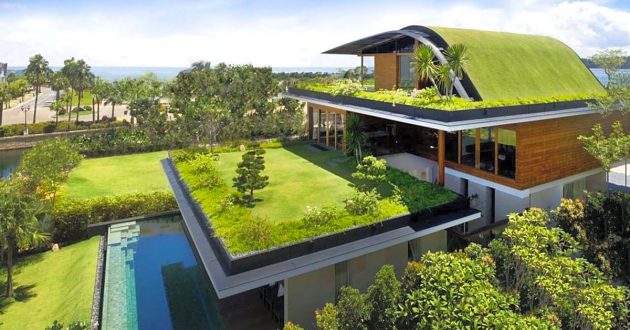All human activities have a consistent impact on the environment. Throughout human history, however, this has varied greatly. As Globalcarbonatlas.org points out, our ancestors who inhabited the planet 800,000 years ago left little carbon footprint as their activities were closely linked to nature and the oceans regulated the carbon dioxide produced by their existence.
Today, according to the World Bank, CO2 emissions are 4.5 tons per capita and year. Some unsustainable numbers for the health of our planet have prompted governments and organizations from the five continents to propose an agenda for civilization to stop relying on perishable fuels, decarbonize, and progress towards fully ecological ones between 2030 and 2050 to achieve sustainability.
And to achieve that, every detail counts. For this reason, more and more citizens are trying to contribute their grains of sand to promote this sustainability. And one of the most popular options is bioconstruction. We want to talk to you about them today.
What is Bioconstruction?
As a human activity, the real estate sector will inevitably pollute the environment. There are currently 36 “megalopoles”, i.e. cities with more than 10 million inhabitants; The market must therefore respond to high demand. And this results in high energy consumption and carbon emissions that account for nearly 40% of the total current generated by our species.
Therefore, it was also one of the sectors that took this problem most seriously and used to know how to propose solutions. Among them bioconstruction, a discipline born from architecture to create and build houses fully integrated with the environment in which they are located. In this way, it seeks to understand how nature works, to take advantage of its benefits and pollute the environment as little as possible.
And although it’s currently booming, its inspiration goes way back, because before humans used modern materials like concrete or steel, buildings were built from natural raw materials like wood, earth or clay. Stone. The same ones that today are made of eco-materials, known for having a low environmental impact in their manufacture and maintenance, not presenting any risk to human health and at the same time not compromising their durability and being economically profitable.
Differences between organic construction and sustainable construction
Although they sound very similar, these terms do not mean the same thing. Just take a look:
As we have seen, organic construction requires a study before construction. This includes aspects such as the weather, the hours of light and shade, the type of soil, the orientation, the wind, etc. The aim is to design a house with materials from the surrounding area and to take advantage of all the benefits that nature offers with a minimum expenditure of energy.
Sustainable building focuses more on the consumption of residential buildings, as it aims to make the building behave as environmentally friendly as possible while being as energy self-sufficient as possible.
In short, bio-construction pursues energy efficiency from a more natural approach: it makes better use of the thermal and climatic conditions of the environment to have the least possible impact on the environment. While sustainable construction seeks its energy balance so that it can function for a long time without consuming resources or damaging the environment.















